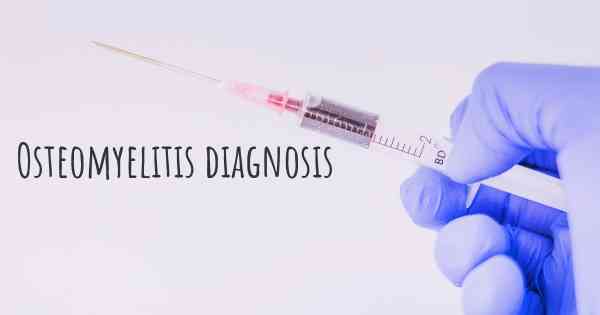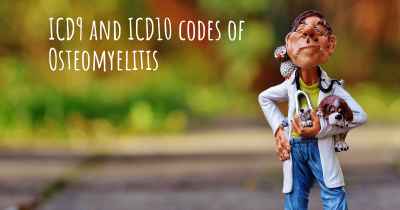How is Osteomyelitis diagnosed?
See how Osteomyelitis is diagnosed. Which specialists are essential to meet, what tests are needed and other useful information for the diagnosis of Osteomyelitis

Osteomyelitis is a serious infection of the bone that can be caused by bacteria, fungi, or other pathogens. It can affect people of all ages and can lead to significant complications if not diagnosed and treated promptly. The diagnosis of osteomyelitis involves a combination of clinical evaluation, imaging studies, and laboratory tests.
Clinical Evaluation
The first step in diagnosing osteomyelitis is a thorough clinical evaluation by a healthcare professional. The doctor will review the patient's medical history, including any previous infections or injuries, and perform a physical examination. They will look for signs and symptoms that may indicate osteomyelitis, such as:
- Pain and tenderness: Osteomyelitis often causes localized pain and tenderness over the affected bone.
- Swelling and redness: Inflammation of the bone can lead to swelling and redness in the surrounding area.
- Fever: Osteomyelitis can cause a systemic infection, leading to fever and chills.
- Restricted movement: If the infection affects a joint, it may result in limited range of motion.
- Open wound or sinus tract: In some cases, osteomyelitis may be associated with an open wound or a draining sinus tract.
Imaging Studies
Imaging studies play a crucial role in the diagnosis of osteomyelitis. The most commonly used imaging techniques include:
- X-rays: X-rays can help identify changes in the bone, such as bone destruction, periosteal reaction (new bone formation), or the presence of an abscess.
- Magnetic Resonance Imaging (MRI): MRI provides detailed images of the bone and surrounding soft tissues. It can detect early signs of osteomyelitis, such as bone marrow edema, as well as abscesses or sinus tracts.
- Computed Tomography (CT) scan: CT scans can provide cross-sectional images of the bone, allowing for a more detailed assessment of bone destruction and the extent of the infection.
Laboratory Tests
Laboratory tests are essential in confirming the diagnosis of osteomyelitis and identifying the causative organism. The following tests are commonly performed:
- Blood tests: A complete blood count (CBC) can reveal an elevated white blood cell count, indicating an ongoing infection. Blood cultures may also be taken to identify the specific bacteria or fungi causing the infection.
- Biopsy: A bone biopsy involves taking a small sample of bone tissue for laboratory analysis. This allows for the identification of the causative organism and determination of its antibiotic susceptibility.
Conclusion
In summary, the diagnosis of osteomyelitis involves a combination of clinical evaluation, imaging studies, and laboratory tests. The clinical evaluation helps identify the signs and symptoms associated with the infection, while imaging studies such as X-rays, MRI, and CT scans provide detailed images of the affected bone and surrounding tissues. Laboratory tests, including blood tests and bone biopsy, are crucial in confirming the diagnosis and identifying the causative organism. Prompt and accurate diagnosis is essential for initiating appropriate treatment and preventing complications associated with osteomyelitis.
Posted Oct 5, 2017 by Michael 2600
Posted Oct 21, 2017 by Tsarm 700
It would be nice for a blood test to detect it quickly...is there? I don't know.
Posted May 16, 2022 by Zgo 3050








